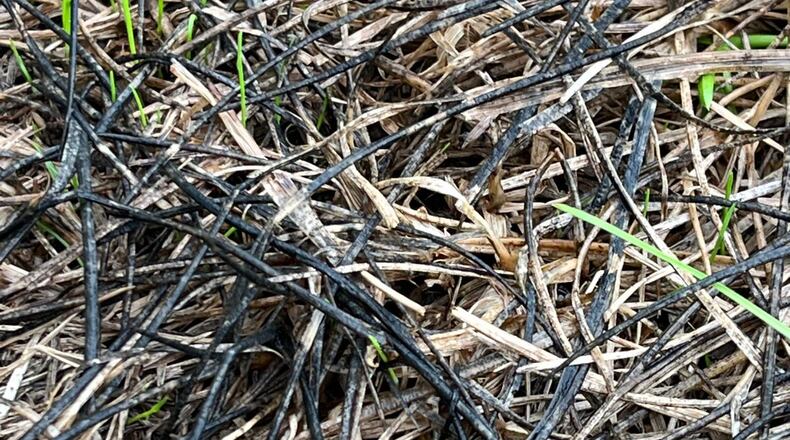Once the weather dried up, they disappeared. Slime molds don’t tend to cause death to a plant but rather feed on dead plant tissue.
This leads to the next question in the turfgrass sample. Is the turf still alive? Once my son started digging around in the grass, he discovered that in his case, there were still live crowns as well as new grass showing up below the dead grass.
He was able to rake out the dead turf, allowing the new turf to thrive. In addition, he put down some new grass seed to fill in dead spots.
These dead spots were likely due to the drought, but I have also seen some dead areas caused by cinch bugs and bluegrass billbugs. Fortunately, the armyworm situation has not materialized.
If your grass hasn’t turned green from the recent rain, and it’s gray in color, it’s likely dead. Now is the time to act. If you wait much longer, you will be nearing the window where any potential new grass blades will be damaged by cold temperatures.
Grass seed likes cool nights and warm days and germinates fairly quickly under these conditions. As mentioned above, remove as much of the dead tissue as possible. Scratch the soil surface with a hard-nosed rake to provide good seed-to-soil contact.
If you haven’t fertilized the lawn this fall, do it now as well. Follow this with another fertilization eight weeks later (around Thanksgiving).
We were gone for 10 days during the drought followed by the rain and the dandelions and other broadleaf weeds made a quicker recovery than did the grass. Fall is an excellent time to eliminate these weeds if you choose to do so.
However, if you are going to be treating broadleaf weeds, avoid any areas where you put down new seed. Wait until spring.
As my good friend Randy Tischer, former owner of Green Velvet Sod Farms used to say, “Feed the baby.” Worry about getting the grass seed established before you worry about weeds.
He also said you don’t need to use straw to protect the seedlings if you do a fall seeding. The only time you might use it in the fall is if you are on a slope where the potential for seed runoff might occur.
Pamela Corle-Bennett is the state master gardener volunteer coordinator and horticulture educator for Ohio State University Extension. Contact her by email at bennett.27@osu.edu.
About the Author
